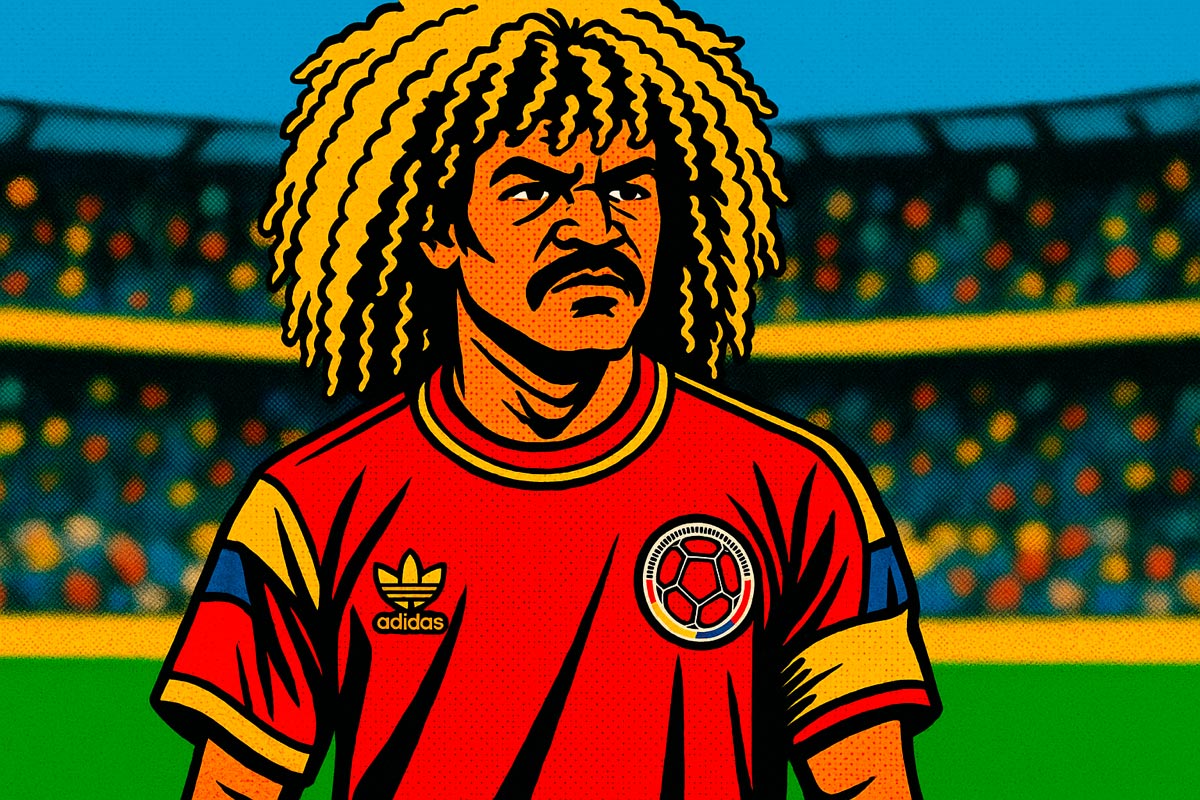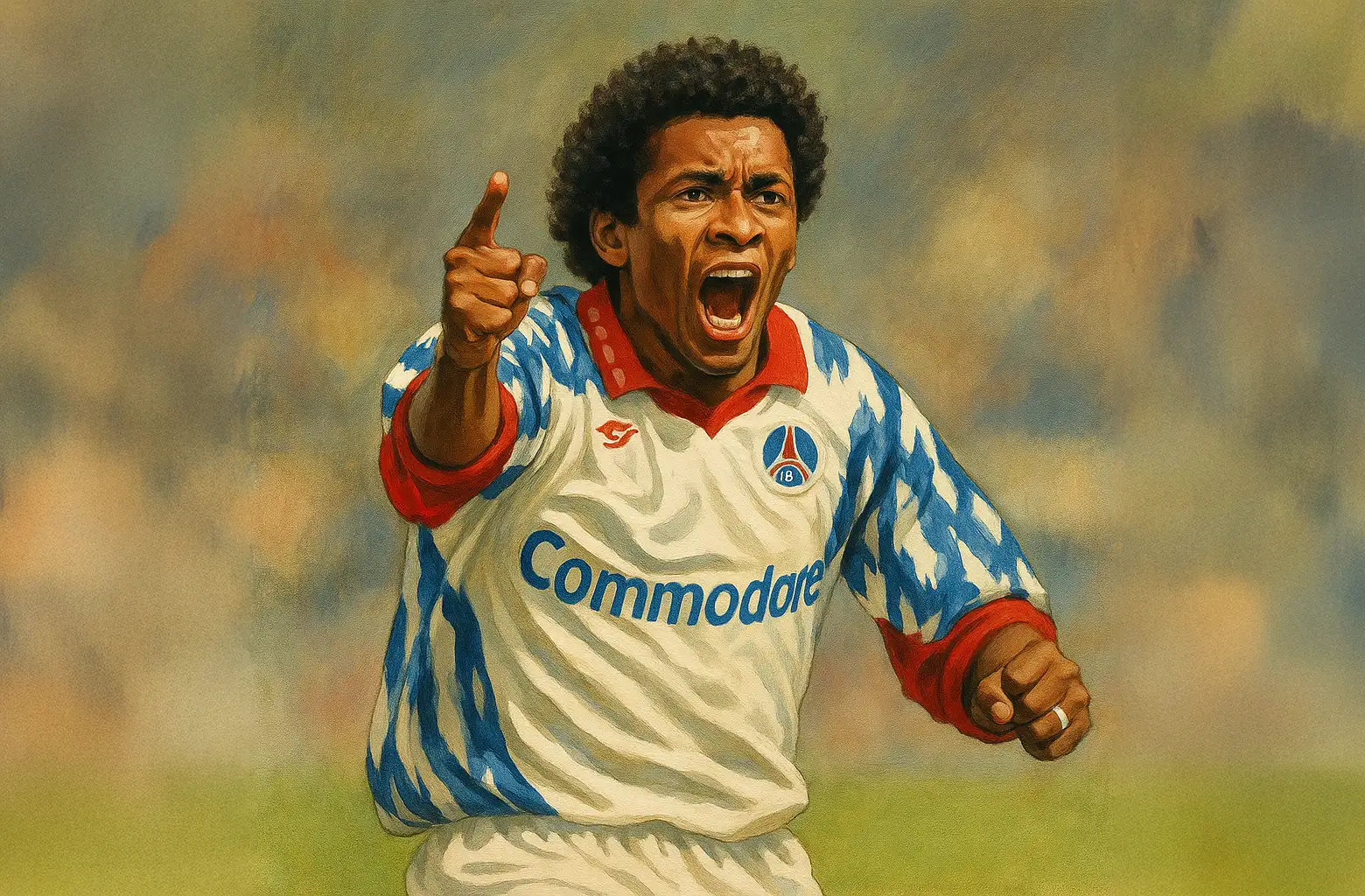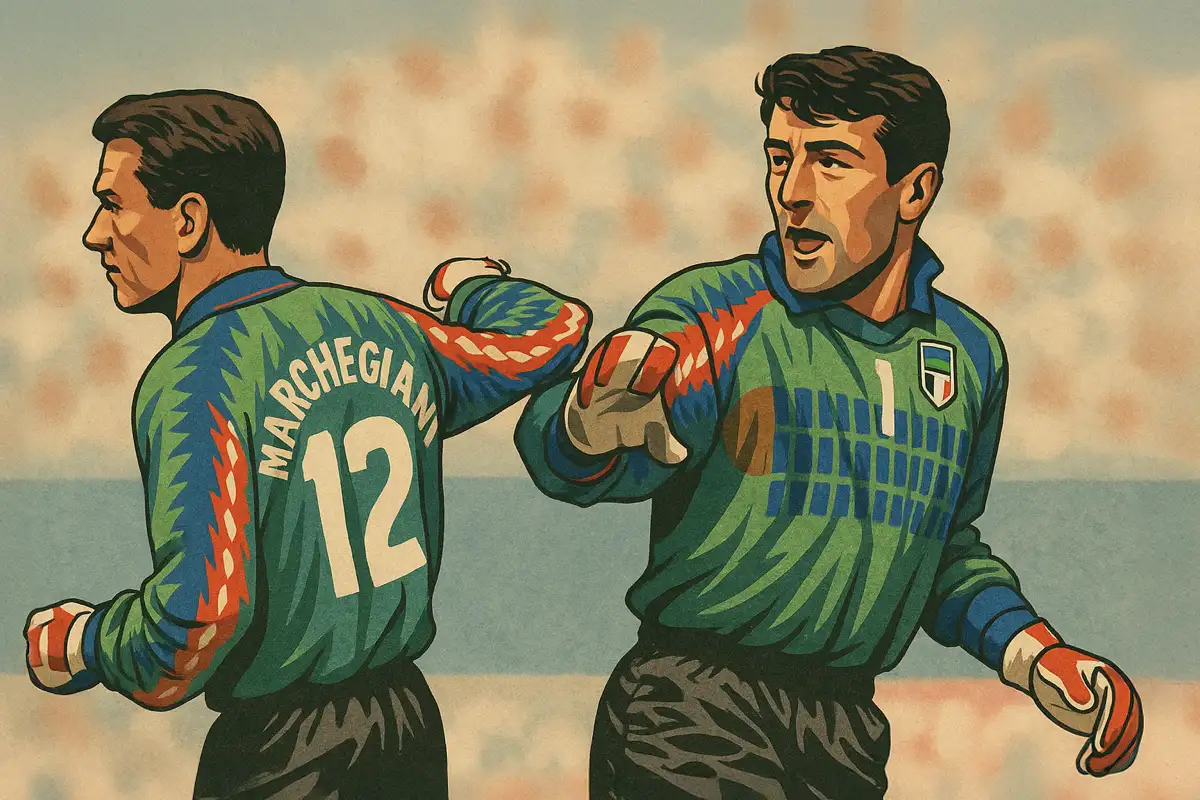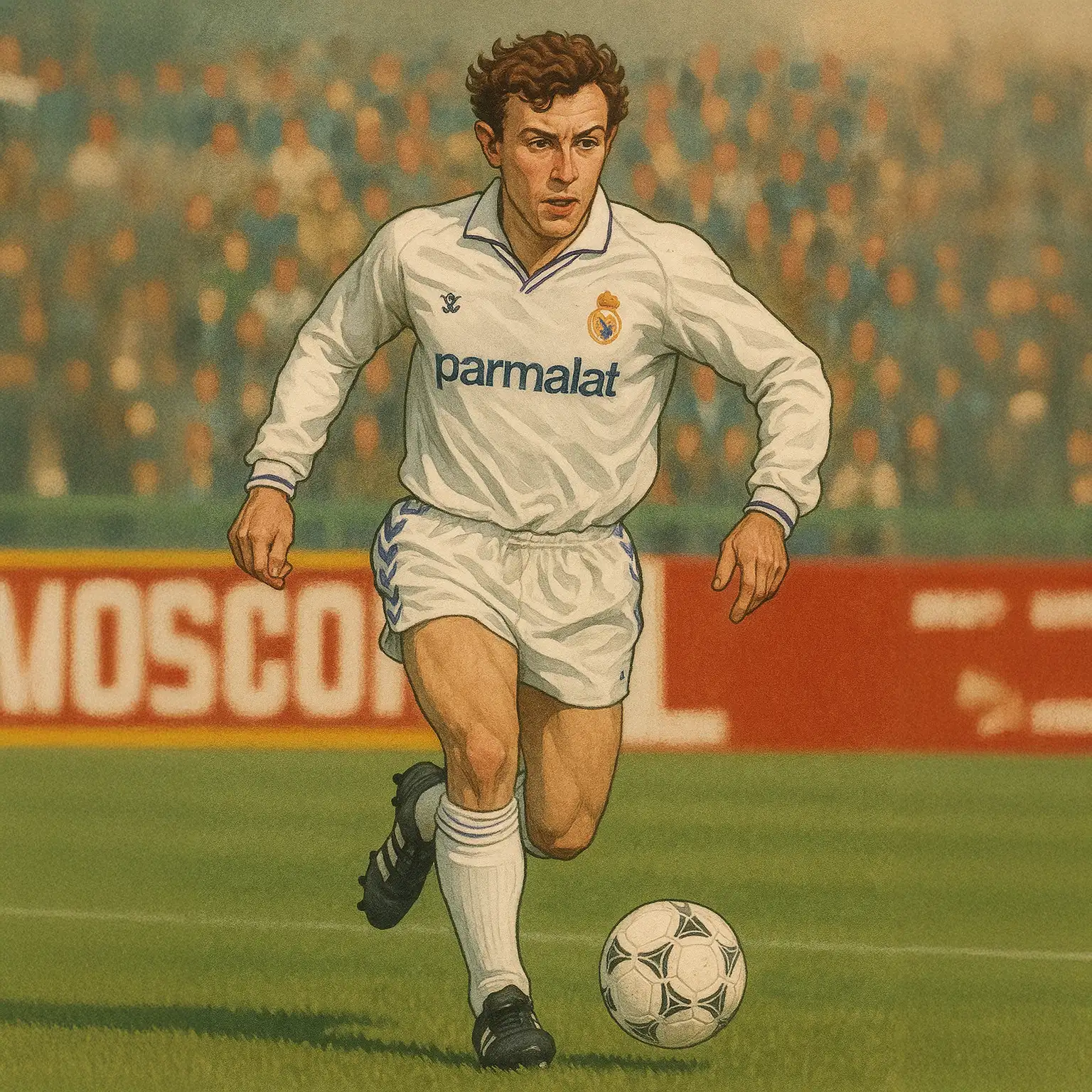Carlos Valderrama: The Magician Who Never Took the Grand Stage

In football, some figures burn bright on the greatest stages—the Camp Nous and Old Traffords, the San Siros and Bernabéus. Others live in memory not because of where they played, but how they played. Carlos Valderrama,
Colombia’s golden mane of midfield magic, belongs to the latter. He enchanted the world at three World Cups, became a walking symbol of South American artistry, and remains one of the most recognisable players in the game’s history.
And yet… he never wore the shirt of a true footballing superpower. No Real Madrid. No Juventus. No Liverpool. He was a star without a stage. Which begs the question: how can one of the most iconic players of the 1990s have never graced one of football’s elite clubs?
The answer is a story of timing, temperament, and a player who stayed loyal to a rhythm all his own.
Born to the Ball
Carlos Alberto Valderrama Palacio was born on 2 September 1961 in Santa Marta, Colombia. Football was in the blood—his father, Carlos Valderrama Sr., had been an amateur player. But the young Valderrama was something else entirely. From the streets of the Caribbean coast came a player who danced to his own tempo. While others sprinted, he strolled. While others tackled, he turned. His game was built on vision, touch, and timing.
He joined Unión Magdalena in 1981, a modest club in his hometown, where he made his professional debut. Within two years, he’d earned a move to Millonarios, one of Colombia’s traditional giants. But it was at Deportivo Cali, between 1985 and 1988, that his reputation truly blossomed. With that blonde perm and a passing range that stretched across time zones, Valderrama was more than a footballer—he was theatre.
In 1987, he was named South American Footballer of the Year, becoming the first Colombian to win the award.
And Europe noticed.
A European Sojourn
In 1988, aged 27, Valderrama crossed the Atlantic to sign for french side Montpellier HSC. He joined a squad featuring Roger Milla—then already 37 years old—and Brazilian centre-back Júlio César, who would later go on to play for Juventus and Borussia Dortmund.
At first, Valderrama struggled. The physicality of Ligue 1 didn’t suit his tempo. But by 1989–90, he was central to Montpellier’s Coupe de France triumph—their first major trophy since 1928–29. That team featured future stars like Laurent Blanc, Vincent Guérin, and Eric Cantona. Valderrama’s contribution, as always, came in the form of unrivalled vision and distribution. He played 77 matches for the club, scoring 4 goals and dictating the game from deep.
But he never moved up the European ladder.
In 1991, he joined Real Valladolid in Spain. The team was managed by none other than Francisco Maturana—his former (and future) Colombia national team coach—and featured fellow Colombian greats René Higuita and Leonel Álvarez, alongside Spanish internationals Vicente Engonga and José Luis Caminero. On paper, it was a Colombian enclave in La Liga. But Valladolid were struggling. The fit was again awkward. Valderrama featured in just 17 matches. By the end of the season, he was gone—back to Colombia.
His European adventure had lasted just three years.
Back Where He Belonged
Valderrama returned to Colombia in 1992, joining Independiente Medellín, and later Atlético Junior. It was at Junior, based in the coastal city of Barranquilla, that he found his footballing soulmate. The club played attacking, expressive football. The Caribbean air matched his mood. With teammates like Iván René Valenciano—a prolific striker known as “El Bombardero”—Valderrama orchestrated two league titles (1993 and 1995) and cemented his godlike status in Colombian football.
He could have gone back to Europe. Offers came, especially after the 1994 World Cup. But Valderrama stayed. By then, he was over 30 and well aware of what Europe required: adaptation, rigidity, systems. He didn’t want to change. He never did.
The World Cup Performer
Valderrama’s greatness never needed a Champions League stage. He had the World Cup.
In 1990, Colombia returned to the tournament for the first time in 28 years. They brought flair, courage, and Valderrama’s orchestral control to Italy. Colombia’s football was sexy, attacking, irresistible at times. In the group stage, they famously drew 1–1 with eventual champions West Germany, with a last-gasp goal from Freddy Rincón after a genius through ball from Valderrama that dissected the German defence and slipped under Bodo Illgner’s dive. Colombia were through to the Round of 16.
But it ended in heartbreak. Facing Cameroon, Colombia were level deep into extra time when René Higuita, ever the maverick, attempted to dribble past 38-year-old Roger Milla. Milla stole the ball and scored. Moments later, he scored again. Colombia were out.
In 1994, expectations were even higher. Colombia had thrashed Argentina 5–0 in Buenos Aires during qualifying. Pelé tipped them to win the tournament. But the pressure was suffocating. Internal tension, political interference, and fear crept into the squad. They lost to Romania and the United States and were eliminated in the group stage. Then came the unthinkable—defender Andrés Escobar was murdered days after returning home.
In 1998, Valderrama returned for a third World Cup, becoming the first Colombian to do so. He was 36, still wearing the armband with pride. Colombia again fell in the group stage, but Valderrama’s presence remained a symbol of a golden, if cursed, generation.
Across three World Cups, he played 10 matches, scored once, and assisted four. But statistics do little justice to what Valderrama brought to the world stage: tempo, creativity, and passes no one else saw.
“
“I play football the way I live life: slowly, with love.”
Carlos Valderrama Tweet
Major League Maestro
In 1996, Valderrama became one of the founding figures of Major League Soccer. He joined Tampa Bay Mutiny as the league’s first big-name international signing. At 35, his legs were slower, but his mind remained two plays ahead.
In his debut season, he recorded 17 assists and was named MLS MVP. He later played for Miami Fusion and Colorado Rapids, becoming a cult hero in the United States.
In 2000, aged 38, Valderrama recorded the only 20+ assist season in MLS history—finishing with 26, a single-season record that still stands.
He played his final professional match on 20 September 2002, a 1–1 draw with the Kansas City Wizards. Naturally, he signed off with a trademark assist—setting up Mark Chung’s goal. At 41 years and 18 days, he became the oldest player in MLS history at the time. There was no better ending: not with a sprint, but with a pass.
So... Why No Big Club?
There are a few players in football history whose aura outgrew their CVs. Valderrama is one.
He had the talent to play for Barcelona. The intelligence for Milan. The imagination for Ajax. But the game, in his era, demanded compromise. Physicality, pace, conformity. Valderrama offered none of that.
He wasn’t fast. He wasn’t strong. But his vision—his ability to see the invisible path, the delayed run, the perfect moment—was unmatched. He didn’t chase the ball—he summoned it. He didn’t run into space—he created it. He was an orchestra conductor in a world that increasingly asked its midfielders to be drummers.
European giants—often suspicious of unorthodox genius—looked elsewhere. He, too, was never one to chase transfers. As he once said:
“I play football the way I live life: slowly, with love.”
Legacy
Carlos Valderrama retired in 2004, aged 42. His career spanned over two decades, across three continents, and left an imprint far larger than silverware could ever measure.
He played 111 times for Colombia, the second-most in history, and scored 11 goals. He appeared at three World Cups and six Copa Américas. He won two Colombian league titles, one Coupe de France, and one MLS MVP.
But numbers feel beside the point. Valderrama was not about stats. He was about style. He is remembered for his hair, yes—but also for the grace of his touch, the tempo of his game, and a passing capacity that was one of a kind.
He made the game more beautiful. He made us dream. And in the end, what is football if not that?
More Than a Club Man
Why didn’t he play for a top club?
Because some players don’t need one to be remembered.
Carlos Valderrama didn’t conquer Europe. He didn’t win the Ballon d’Or. He never lifted the Champions League.
But he gave us magic.
And that lasts forever.

Valdo – provisory title
He dribbled like a dancer, played with a smile, and made chaos look beautiful. A rebel with the ball, and a genius no system could ever hold down.

Italy’s 90’s Goalkeepers – provisory title
He dribbled like a dancer, played with a smile, and made chaos look beautiful. A rebel with the ball, and a genius no system could ever hold down.

Emilio Butragueño – provisory title
He dribbled like a dancer, played with a smile, and made chaos look beautiful. A rebel with the ball, and a genius no system could ever hold down.

